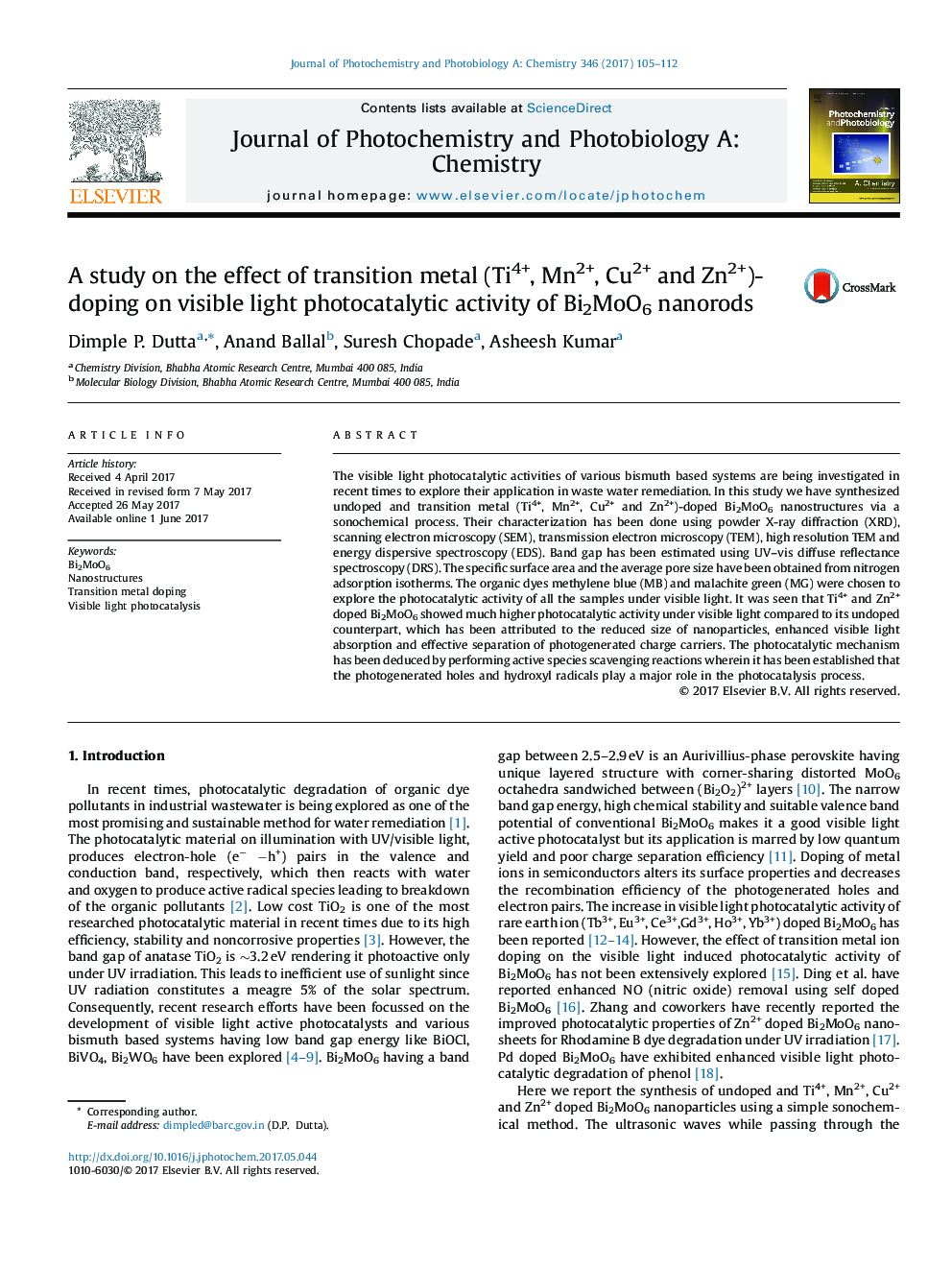| Article ID | Journal | Published Year | Pages | File Type |
|---|---|---|---|---|
| 4753807 | Journal of Photochemistry and Photobiology A: Chemistry | 2017 | 8 Pages |
â¢Sonochemical synthesis of undoped and transition metal (Ti4+, Mn2+, Cu2+ and Zn2+)-doped Bi2MoO6 nanostructures.â¢The dopant transition metal ions affect the electronic band structure and morphology of Bi2MoO6.â¢Better visible light photocatalytic response of the Bi2MoO6:Ti4+(2%) and Bi2MoO6:Zn2+(2%) samples.â¢Possible mechanisms for the observed photocatalytic response has been proposed.
The visible light photocatalytic activities of various bismuth based systems are being investigated in recent times to explore their application in waste water remediation. In this study we have synthesized undoped and transition metal (Ti4+, Mn2+, Cu2+ and Zn2+)-doped Bi2MoO6 nanostructures via a sonochemical process. Their characterization has been done using powder X-ray diffraction (XRD), scanning electron microscopy (SEM), transmission electron microscopy (TEM), high resolution TEM and energy dispersive spectroscopy (EDS). Band gap has been estimated using UV-vis diffuse reflectance spectroscopy (DRS). The specific surface area and the average pore size have been obtained from nitrogen adsorption isotherms. The organic dyes methylene blue (MB) and malachite green (MG) were chosen to explore the photocatalytic activity of all the samples under visible light. It was seen that Ti4+ and Zn2+ doped Bi2MoO6 showed much higher photocatalytic activity under visible light compared to its undoped counterpart, which has been attributed to the reduced size of nanoparticles, enhanced visible light absorption and effective separation of photogenerated charge carriers. The photocatalytic mechanism has been deduced by performing active species scavenging reactions wherein it has been established that the photogenerated holes and hydroxyl radicals play a major role in the photocatalysis process.
Graphical abstractTi4+ and Zn2+ doping in nano Bi2MoO6 leads to decreased band gap, increased specific surface area, improved separation of photogenerated charge carriers and enhanced photocatalytic activity under visible irradiation for remediation of dye effluents.Download high-res image (163KB)Download full-size image
